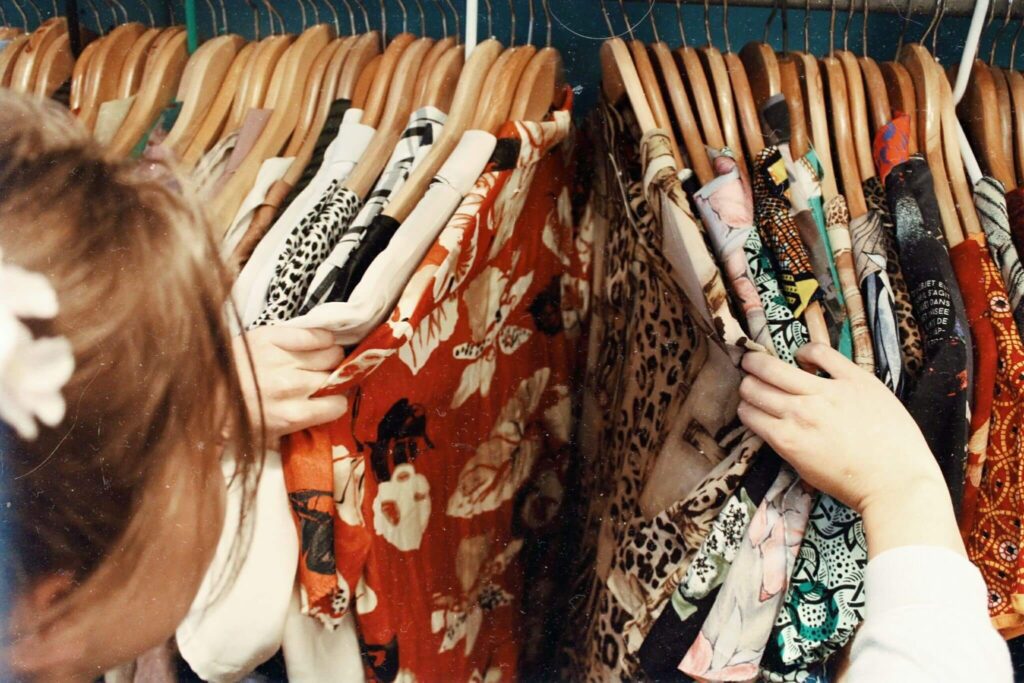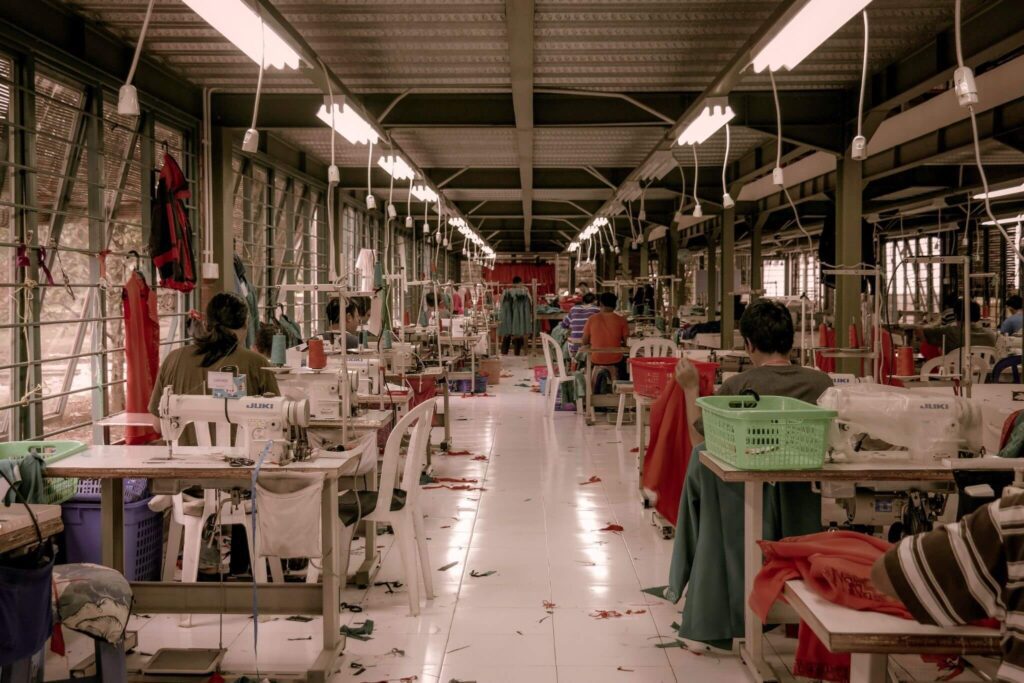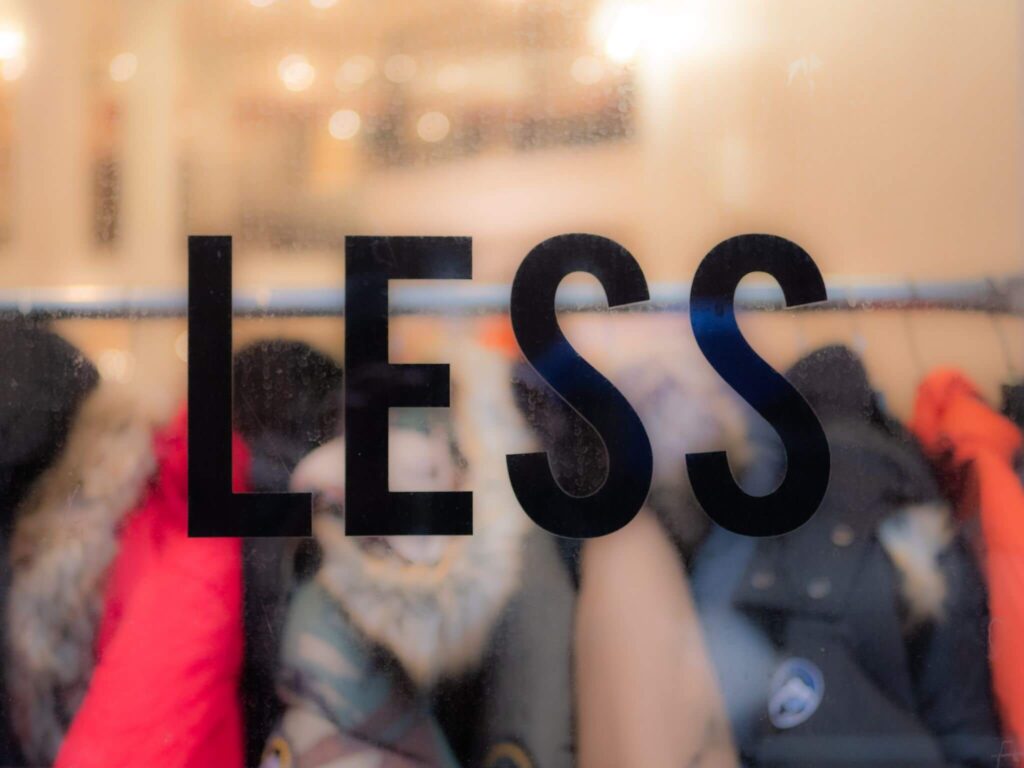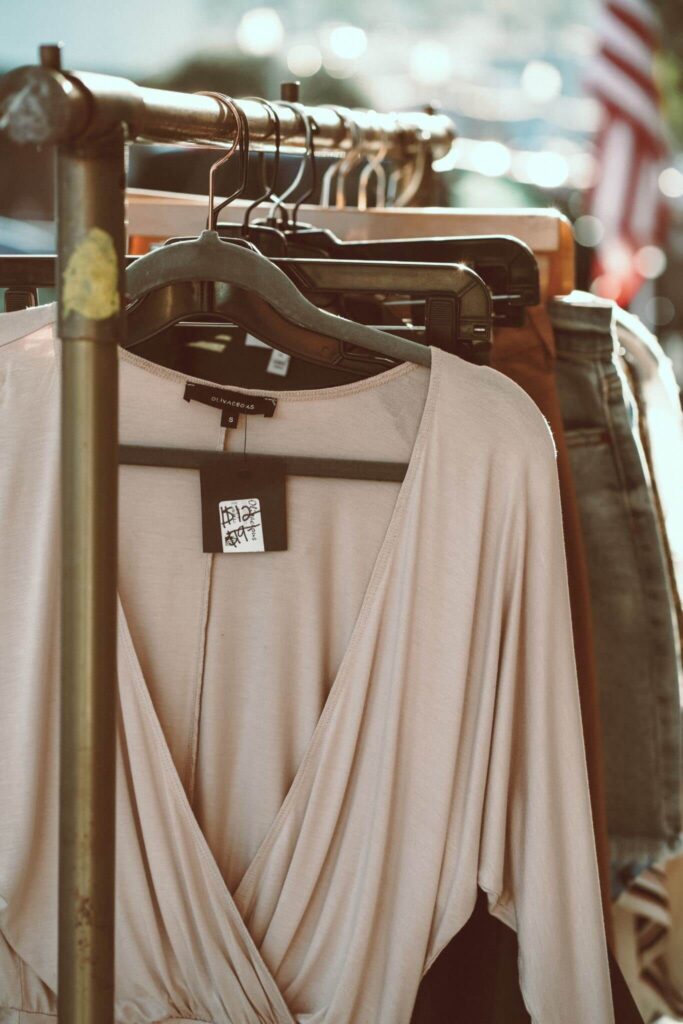
Why Second-Hand Clothing is Better for the Planet
Clothing has become a necessity in society. Unclothed, we are deemed as highly inappropriate. But more than what is simply expected, dressing up is a form of one’s identity, a concept of expression, and certain items can become part of a widespread trend.
Different styles make their way into the public eye, gain popularity, and cause a spike in consumer demands. But then the trend is tossed, and while most of us forget about the existence of the faze, the products themselves continue on. In fact, the influx of clothing items thrown away means that 85% ends up in landfills, laying waste to the Earth and further polluting it with harmful dyes and chemicals.

Caption: The fast fashion industry contributes to 20% of global wastewater and 10% of global carbon emissions.
Credit: Becca Mchaffie, Unsplash
Let’s start from the very beginning. Clothes require a combination of different materials to create. These resources come from numerous places, either grown, shaved from an animal, or synthesised from other extractable materials. Harvesting any of these requires fuel, land, and water – all of which are precious, limited resources.Moving on to the next phase, clothes then need energy and water to produce. Once the basic item has been created, harmful chemicals in the form of synthetic dyes are utilised for aesthetic purposes, which later seep back into our waterways. Then, when the clothing has reached its final form, it’s transported to many different locations before ending up on the shelves. Ships, trucks, and cars are often used for this job and the Earth pays an extremely heavy toll for this as carbon emissions are continuously released into the atmosphere.
Finally, once the clothing item is purchased, worn, and then discarded, it most likely ends up in a landfill. Here, it wastes valuable space and further pollutes the environment. It will remain here for years to come. In fact, most of all clothing ever made still exists today.

Caption: Fast fashion and the clothing produced from the industry pollutes the Earth and uses up vital resources at every step of the production line. More often than not, clothing is made in harmful work environments too.
Credit: Rio Lecatompessy, UnsplashIf you’d like to learn more about the effects of fast fashion, read our article here.
Purchasing Second-Hand
There are myriad benefits to vintage shopping, both for the planet and your wallet. Firstly, and most obviously, you are reducing waste. If there were no demand for already-used clothing items, all would end up in a landfill and take up a large area of space. In addition, when clothes slowly biodegrade, they release microplastics – and we all know how detrimental those are to the planet and animals who call it home. In the same breath, second-hand shopping preserves vital resources. It’s estimated that 600 kilograms of used clothes on the market equates to saving 220 kilograms of carbon emissions, nearly 150 trees, and over 3.5 billion litres of water. Now imagine what we could collectively save if we all made second-hand shopping a priority.
Secondly, when you decide to purchase clothing second-hand, you’re giving that item a new lease on life. Just because someone was finished with the product, doesn’t mean the product itself is just going to disappear. It could end up being your new favourite sweater, dress, or jacket. And this works both ways. If you no longer want an item of clothing, don’t throw it out! You can either sell it off to a second-hand clothing store to continue the cycle or donate it to those in need.
Finally, second-hand clothing is more affordable than brand-spanking-new clothing items. If you turn second-hand shopping into your own trend, you’re guaranteed to save some money. If we continue to purchase clothes that are byproducts of the fast fashion industry, we’re constantly contributing to the increased demand and supply chain, further spurring the rapid production of harmful clothing products. This, in turn, deeply costs both wallets, our planet, and the entire population.

Caption: Second-hand shopping is one of the most effective yet easiest ways to reduce the negative impacts of the fast fashion industry and reduce clothing pollution.
Credit: Samuel Ramos, Unsplash
As we can see, purchasing second-hand clothing is one of the simplest and most effective ways to mitigate the harmful effects of the fast fashion industry. But there are a few more healthy habits we can all adopt today that will aid in the battle to end this pollution:- Buy Less: We really don’t need that much, and it will save more than you ever expected if you abstain from giving in to those consumer cravings.
– Support local and sustainable brands: Clothes will always be created and produced, so why not increase the demand for clothes made from sustainable only materials? This not only helps the local economy and the environment as a whole but also shifts the reliance from fast fashion to sustainable trends.
– Repair: Instead of tossing out that torn T-shirt, mend it! This will save money and the environment and you can still keep the clothing!
– Donate: With the global population continuously rising, so too is the unemployment and homeless rate. There will always be someone in need. The landfill does not need that item of clothing, but a person does. Don’t toss, DONATE.
– Recycle: Some materials and textiles can be recycled. While this should be a last resort, it’s important to consider recycling before ever throwing away your clothes.

Caption: One way to reduce the emissions and overuse of resources from the fast fashion industry is to simply consume less.
Credits: The Blowup, Unsplash
How can we reduce our Fashion Environmental Impact — SustainYourStyle. (2014). SustainYourStyle. SustainYourStyle. https://www.sustainyourstyle.org/en/reducing-our-impact
Kellogg, A. K. (2016, April 5). Is it better to buy second hand or new and sustainable? Going Zero Waste. https://www.goingzerowaste.com/blog/is-it-better-to-buy-second-hand-or-new-and-sustainable/
Vincenti, P. (n.d.). Second-hand clothes are good for the environment and economy | SmartGreen Post | news from the environment. https://www.smartgreenpost.com/2019/10/19/second-hand-clothes-are-good-for-the-environment-and-economy/




